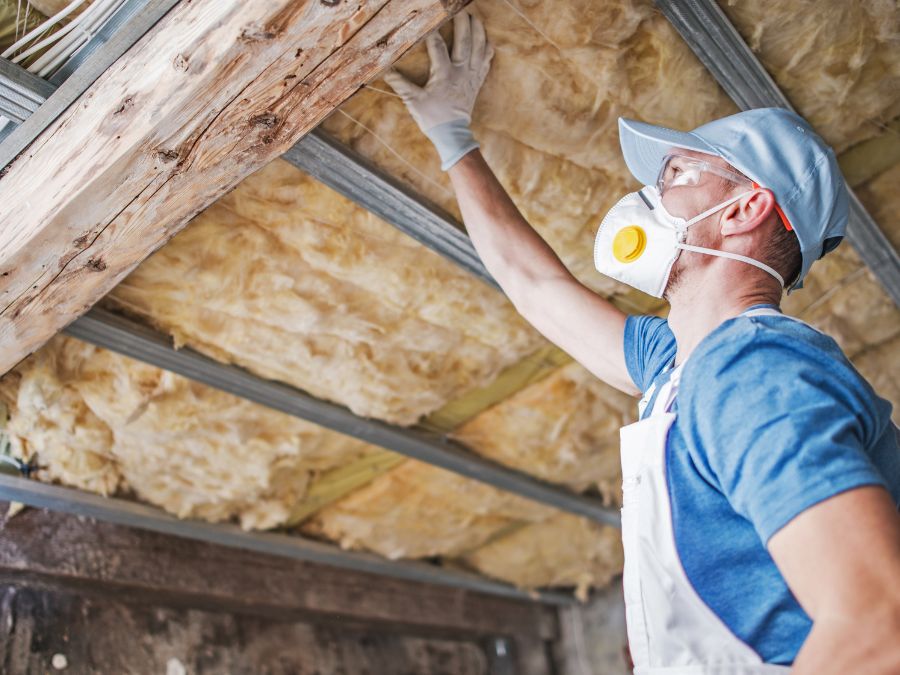How to Spot Signs of Moisture in the Attic of Your Home
Have you ever wondered what mysteries your attic holds? Beyond the Christmas decorations and old photo albums, your attic might be harboring a silent invader: moisture. Moisture in the attic is more than a nuisance; it can be a silent destroyer, leading to mold, rot, and costly repairs. But how can you spot the telltale signs before it’s too late?
In the cozy conversation we’re about to have, think of me as your neighbor over the fence, giving you the inside scoop. Together, we’ll explore the nooks and crannies of your attic’s moisture issues, just like we’d explore a hidden map to a treasure – except this time, the treasure is the well-being of your home.
The importance of keeping your attic dry is like ensuring your hat is waterproof on a rainy day – it protects everything underneath. Let’s dive into the signs that might indicate moisture is crashing your attic party.
The Attic: Your Home’s Top Hat
Imagine your attic like the top hat of your home. It sits up high, often forgotten, but it plays a crucial role in safeguarding your home’s overall integrity. Just as a top hat would feel if caught in a downpour, your attic will show signs of distress if exposed to moisture. So, let’s tip our hats and look for the clues.
Visual Clues: Stains and Warps
Stains on the Ceiling: They’re not just there for their rustic charm. Dark or discolored spots can be the autographs of moisture. Pay attention to these unsightly blemishes; they’re the first sign that moisture is making itself at home.
Warped Wood: The beams and boards might look like they’re throwing a dance party, bending, and curving. But trust me, it’s not a cause for celebration. Warped wood can be the skeleton’s response to the unwanted moisture.
The Touch Test: Feeling for Dampness
Get hands-on! Running your fingers along the walls and insulation can reveal a lot. If it feels wet or even just oddly cold, moisture might be lurking. It’s like feeling the outside of a cold glass – that condensation is a clear giveaway.
The Smell Test: Detecting Musty Odors
Our noses often know before our eyes do. A musty smell is as indicative of moisture as the scent of rain on dry earth. If your attic smells more like a dank basement, it’s time to investigate.
Insulation Issues: A Moisture Magnet
Insulation is like a sponge; it can soak up moisture without showing many visual signs. When insulation gets wet, its effectiveness plummets, much like wearing a soaked jacket in the cold – it just won’t keep you warm.
Ventilation: Your Attic’s Breath of Air
Poor ventilation can turn your attic into a steam room, and not in a luxurious way. Ensure your attic can ‘breathe’ properly to prevent moisture from being trapped like a hot breath on a cold window.
Mold Matters: A Fungus Among Us
Mold is to your attic what weeds are to a garden – an unwelcome guest that hints at deeper issues. Finding mold in your attic is a definitive sign that moisture has been hanging around too long.
Roof Revelations: Signs of Leaks Above
Inspect your roof from the inside out. Water trails, like little streams down a mountainside, are evidence that your roof might have a leak. These can be the secret paths moisture takes into your attic.
The Condensation Culprit
Condensation can occur when warm air meets the cold attic surface. It’s the attic’s way of crying out for attention, with droplets forming as clear as tears on a windowpane.
Preventative Practices
Don’t just react; act! Regular inspections and maintenance can keep moisture at bay, much like brushing your teeth prevents cavities. A proactive approach is your best defense.
Professional Insight: When to Call In
Sometimes, it’s best to bring in the cavalry. When signs of moisture are widespread or the cause is elusive, a professional can spot the unseen, much like a detective uncovering clues invisible to the untrained eye.
Dealing with Damage: Next Steps
If damage is done, it’s not all doom and gloom. There are steps to repair and recover your attic’s health, akin to visiting a doctor after you’ve caught a cold.
The Financial Fallout of Moisture
Ignoring moisture can hit where it hurts – your wallet. The cost of negligence is like a ticking time bomb, with the potential for an explosive repair bill down the line.
Conclusion
Keeping your attic dry is not just about aesthetics; it’s about the health of your home. With vigilance and regular check-ups, you can ensure that the only thing your attic collects is memories, not moisture.
FAQs on Attic Moisture
What causes attic moisture? Moisture in the attic can arise from a variety of sources, including roof leaks, inadequate ventilation, or even daily activities like showering and cooking if not properly ventilated.
Can moisture in the attic affect my health? Absolutely. Moisture can lead to mold growth, which can cause respiratory issues and other health problems for some people.
How often should I inspect my attic for moisture? It’s a good idea to inspect your attic at least twice a year, typically in the spring and fall, to catch any potential moisture issues early.
What should I do if I find mold in my attic? If you find mold, it’s important to address it quickly. For small areas, you may clean it yourself, but extensive mold should be handled by professionals.
Can I prevent moisture in my attic? Yes, you can prevent moisture by ensuring good ventilation, installing proper insulation, and regularly inspecting for roof leaks or other potential sources of moisture.

